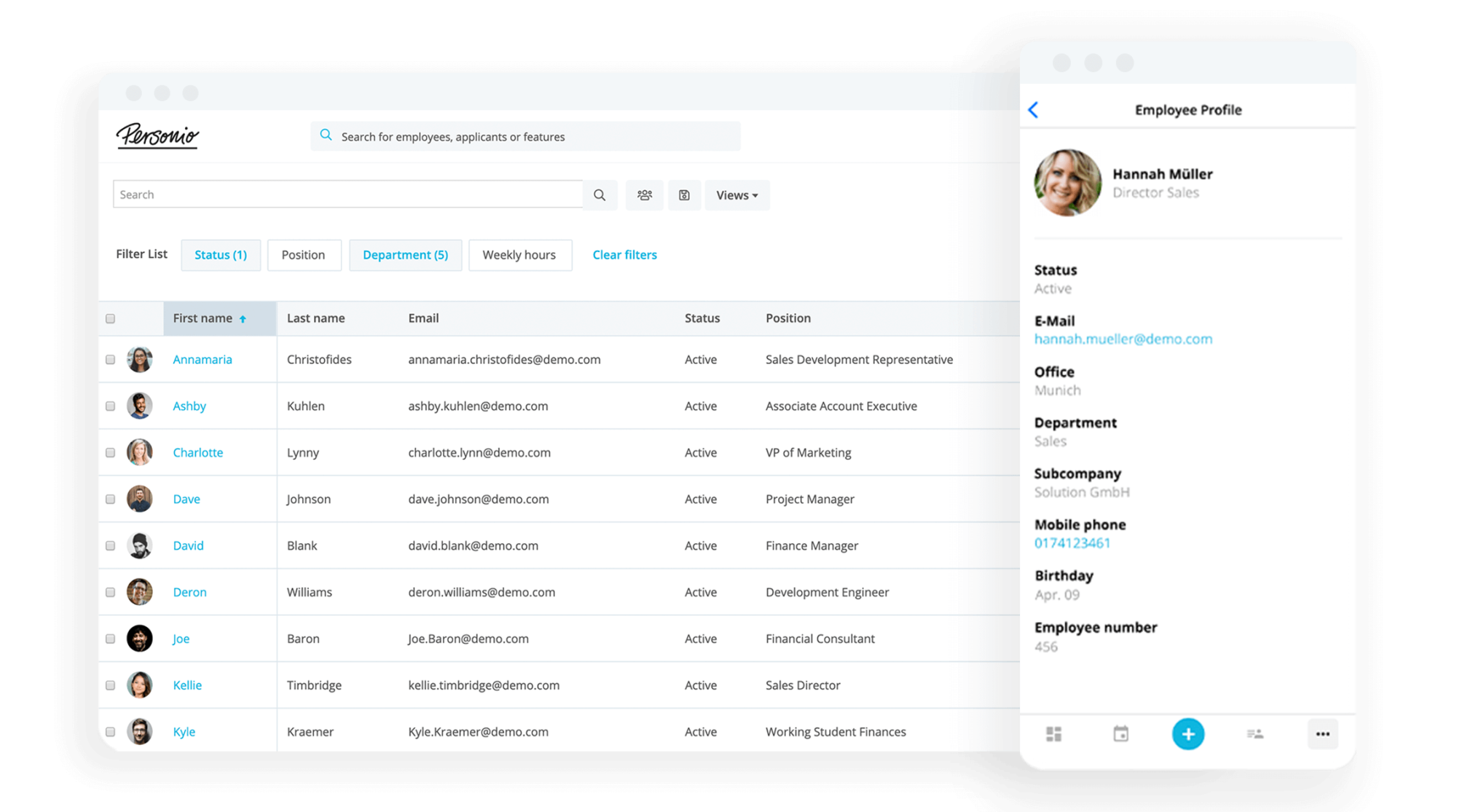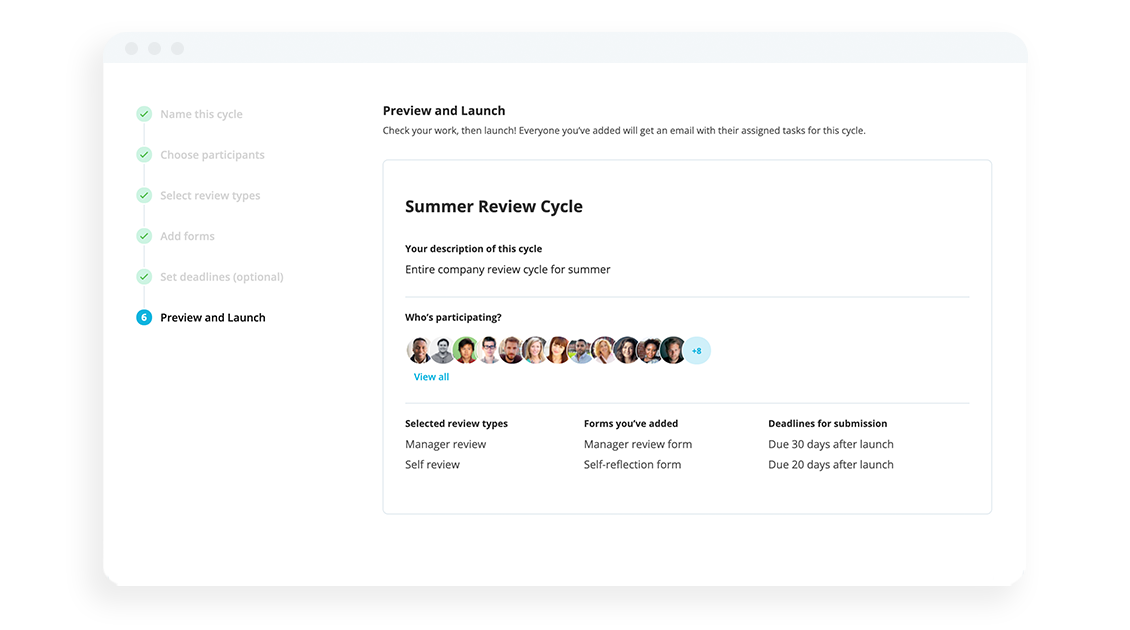Associative Discrimination: Definition, Laws And Examples

Did you know that more than a third of UK adults have reported experiencing workplace discrimination? Research shows that employees are most commonly discriminated against for their age, gender or another one of the protected characteristics listed under the Equality Act 2010.
Even if an employee doesn’t possess one of these characteristics, they can still experience associative discrimination. Here’s our full guide on the matter.
A single source of truth for all employee data: Personio.What is Associative Discrimination?
Associative discrimination is when an employee is treated unfairly or poorly because they are close with someone who has a protected characteristic, as defined by the UK’s Equality Act 2010. The associated person could be their child, spouse, relative, friend or peer.
It is commonly known as discrimination by association.
Here’s a quick example of associative discrimination: Henry is a candidate for a position and is making their through the recruitment process with relative ease. He’s well-qualified, passed a skills test and has just one interview to go before the offer stage.
In his final interview, he mentions he has a disabled child. Soon after, he gets turned down for the role without a reasonable explanation.
Because of the timing and how well his experience was going prior, he believes they turned him down for the job because of his son. Maybe the hiring manager assumed Henry would need more time off work to care for his son or that his attention would be divided.
Forms Of Discrimination In The Workplace
There are two forms of discrimination: direct and associative. Since we’ve already covered associative discrimination, let’s look at what direct discrimination is and the different forms it can take.
Direct discrimination
is when someone is discriminated against because of who they are. For example, if you pass someone over for a promotion because of their race. That is direct discrimination.
Discrimination by perception
is another form of direct discrimination. This is when a person is discriminated against because someone believes they possess a protected characteristic, whether or not they actually do.
is when a rule or arrangement is applied to a large group of people but is unfair to those with a protected characteristic.
An example of this would be if an organisation is hiring for a role and states that candidates must have at least 12 years of experience in a similar position. This could be indirectly discriminatory against a younger candidate for whom that amount of experience isn’t possible, though this wouldn’t be an issue for other older candidates.
If an employee is experiencing harassment from a peer or employer, it means they’re experiencing unwanted and offensive behaviours related to their protected characteristic.
Harassment includes engaging in unwanted conduct and violating someone else’s dignity or creating an intimidating, hostile, degrading, humiliating or offensive environment. For example, if an employee is being sent offensive messages on your team’s internal communications channel because of their religious beliefs.
If an employee experiences any form of discrimination, they may submit a complaint. Unfortunately, this action may lead to another form of discrimination: victimisation.
Victimisation is when a person is subject to unfair treatment from peers or managers because they’ve formally complained about discrimination, harassment, bullying or other abusive behaviour they’ve faced at work.
One Place for All Your Employee Data

Keep a clean record of employee information in a safe and secure place.
Employee Data With PersonioAssociative Discrimination And UK Law
Associative discrimination isn’t just a workplace issue—in the UK, it’s against the law, as per the Equality Act 2010. This Act identifies nine characteristics that are protected from discrimination:
Age
Disability
Gender reassignment
Marriage and civil partnership
Pregnancy and maternity
Race
Religion and belief
Sex
Sexual orientation
It’s unlawful to discriminate against someone who possesses one or more of these characteristics while at work, in education, as a consumer, while using public services, while renting or purchasing property or as a private club/association member.
While associative discrimination isn’t directly mentioned in the Act, it’s implied in Section 13: “A person (A) discriminates against another (B) if, because of a protected characteristic, A treats B less favourably than A treats or would treat others”.
Before this Act, people weren’t protected against discrimination unless they themselves possessed one of the protected characteristics. This law does not cover associative discrimination or discrimination by perception related to marriage, civil partnerships, pregnancy or maternity.
An employer cannot treat a job candidate or employee who possesses one of these characteristics unfairly or differently from other employees. Employers also are not legally allowed to ask questions related to the protected characteristics outlined in the legislation, except in these unique circumstances:
They’re aiming to help a disadvantaged or under-represented group.
They have a good business reason.
The protected characteristic is an occupational requirement.
They need to know if they have to make their workplace more accessible.
They want to learn more about the diversity of their workforce to make it more inclusive.
If an employee feels they’ve experienced discrimination because of their protected characteristic, they can file a tribunal claim against their employer.
5 Examples Of Associative Discrimination
When an employee experiences associative discrimination, it can be just as damaging as experiencing direct discrimination, impacting their career, mental health and professional relationships.
But unfortunately, it can be harder to identify and prove.
Here are a few examples of associative discrimination to help you better understand what it can look like in the workplace and what protected characteristic the antagonist is discriminating against:
Caring For An Ageing Parent
Protected Characteristic: Age
Laura lives with and cares for her ageing father. Her office doesn’t keep strict hours, but sometimes, she’s late coming into work or needs to leave early to care for him or take him to appointments. Her coworkers with young children often have to do the same, but only Laura has been reprimanded for her actions while the parents have not.
This could be a case of associative discrimination based on age since she is not provided with the same flexibility or leniency as her peers.
Supporting The LGBTQ+ Community
Protected Characteristic: Sexual Orientation
On Monday, Matt talks to his team—including his manager—about his weekend and mentions going to his friends’ wedding, who are a same-sex couple.
From this moment on, he experiences negative treatment from his manager. He used to receive positive feedback and plenty of new project work. Now, the conversations he has with his manager feel cold or passive-aggressive, and he’s being passed over for new work.
Though Matt himself isn’t a member of the LGBTQ+ community, he believes he’s being treated unfairly compared to his other team members because he supports and is associated with members of the LGBTQ+ community.
Being In A Mixed-Race Relationship
Protected Characteristic: Race
Sarah was up for a promotion as Marketing Director and was well-qualified for the role. She’d been treated fairly and cordially by her managers and leaders so far.
One day, she posts a photo of her and her spouse on LinkedIn for the first time; Sarah and her spouse are a mixed-race couple, and she’s connected with her peers on LinkedIn, including her manager.
After that, Sarah’s manager starts treating her differently, and she unexpectedly doesn’t receive the promotion she was in line for. She feels this is because of her spouse’s race.
A Daughter’s Gender Reassignment
Protected Characteristic: Gender Reassignment
Tom was a long-time employee at an automotive plant and had developed a positive relationship with his coworkers over the years. Recently, Tom’s daughter had gender-affirming surgery.
He supports his daughter and shares the news with his coworkers, who have mixed reactions. After that, he starts receiving inappropriate remarks about his daughter from some of his coworkers and is excluded from social gatherings.
Caring For A Disabled Relative
Protected Characteristic: Disability
Let’s take a look at a real-world example of this: The case of Follows vs Nationwide. Ms Follows was a Senior Lending Manager (SLM) for the Nationwide Building Society and was working from home to care for her disabled mother.
In 2017, Nationwide planned to cut down their SLM team and require all remaining SLMs to work in the office full-time. The required number of SLMs were made redundant, and Ms Follows’ job was safe, but she wanted to continue to work from home to care for her mother. She told the company this and was dismissed soon after.
Believing she was experiencing associative discrimination, she took her case to a tribunal, which upheld her claim of indirect associative discrimination related to disability.
How To Reduce Risks Of Associative Discrimination Claims
If your organisation is accused of associative discrimination, it may face an employment tribunal. If the tribunal finds the claim valid, the employer may have to compensate the employee for their discrimination.
So, as an employer, how can you reduce instances of associative discrimination in the first place?
First, employers must understand how and why claims of associative discrimination can arise and which characteristics are protected under UK law. Then, you can build upon that knowledge to reduce the risk of associative discrimination claims:
Create clear policies around associative discrimination—including repercussions and complaint procedures—and share them company-wide. Include these policies in new employee training/onboarding, and inform employees of any updates so they can familiarise themselves with them.
Have fair processes in place to investigate claims of associative discrimination. Develop a secure and easily accessible way for employees to submit their claims and ensure that the matter is handled with sensitivity and without bias.
Provide team members at all levels with training focused on identifying, reducing and managing cases of associative discrimination, so they can address it successfully.
Organisations should seek to develop and maintain inclusive environments, and eliminating associative discrimination should be a key requirement in that process. To learn more about clearing your plate to focus on more value-added HR work, contact one of our experts today to schedule your own web demo.

